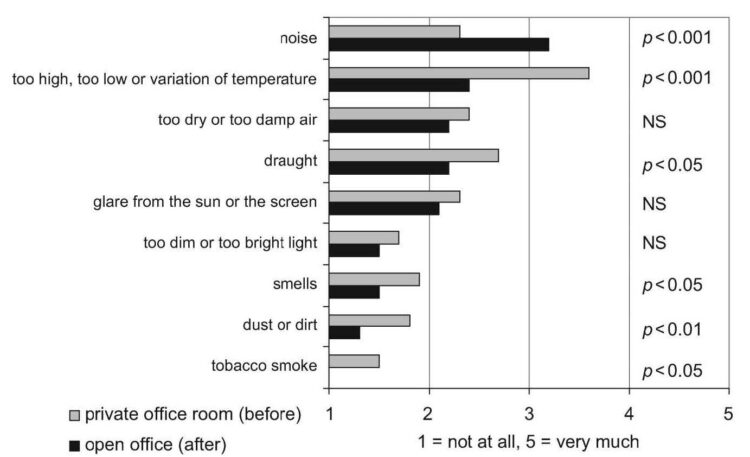September 8, 2020
Acoustics + Design Impacts
Acoustics - Design Impacts Talking Points
Summary
Whether it be for connection or isolation, stimulation or serenity, acoustics’ place in architecture is vital. Finishes, soundscapes, systems, and program are design considerations that cannot be overlooked if a space is to be comfortable, safe, and beautiful.
Keywords
Design, classroom acoustics, reverberation, well-being, noise exposure, materials, job satisfaction, fatigue
Finishes
- Materials and products are continually being developed for high acoustic performance (Kim, 2013).
- Scientists have designed a sound resonance chamber that consists of two parallel plates of transparent acrylic plastic, like a section of double-glazing about the size of a paperback book.

Comparison of sound reflecting ceilings vs. sound absorbing ceilings; acoustic measurements in three areas of a hospital ward (reverberation time, sound pressure level, and speech intelligibility) (Blomkvist 2005)

Assembly detail of the acoustically insulated glazing system designed by MNMU and KIMM (MIT 2013)
Soundscapes in Policy
- Governments are advocating building code revision with greater consideration for acoustic impact on public health (Brown, 2014).
- The United Kingdom’s Department of Health and Social Care wrote in their Healthcare Environment 2007 article that “Designers should ensure that [hospital] patient areas are located away from external sources of noise, such as road traffic since the healing process is slower when patients are exposed to noise for long periods… Noisy spaces, such as restaurants and day rooms, should not be located next to quiet spaces, such as bed areas.”
Acoustic Building System Design
- Low-voltage electro-acoustic background sound system of proven quality that has been designed and installed by qualified professionals to improve “speech privacy.” These systems are available in two types (Sykes 2009):
- Older-style “plenum systems” (i.e., installed above ceiling tiles) radiate sound upward into the plenum
- “Direct-field systems” (these are installed in the ceiling plane) radiate sound downward into the space
Programming for Acoustic Control
- The simultaneous use of absorption materials, sound-absorbing screens and speech masking sound produces the lowest STI (Speech Transmission Index) score in open-plan offices (Kaarela 2009).
- In programming open-plan offices should provide anonymous private rooms because of incidental periods of concentration-demanding work, paired work or private conversations. Alternative workstation types facilitates selection of workstation according to the task and improves the feeling of control over the work environment (Kaarela 2009).

Results for how much the following indoor environmental factors have disturbed individuals at their workstation during a three month period showing the mean values and the significance of change (p-value) (Kaarela 2009).
Over-Treatment
- It is possible to “overdo” acoustic baffling A possible explanation of this effect is that the acoustic treatment of the office reduces the overall noise level and therefore cancels the masking effect of noise from sources at a distance (Balazonva 2008).
- Subjects perceived the noise in the constructed sound-absorbent office as louder than in the real open-plan office, even though the objectively measured sound level in the sound-absorbent office was lower.
- Close sources become more apparent, which causes more annoyance, more disruption and an increase in dissatisfaction with noise in the space.
Key References
